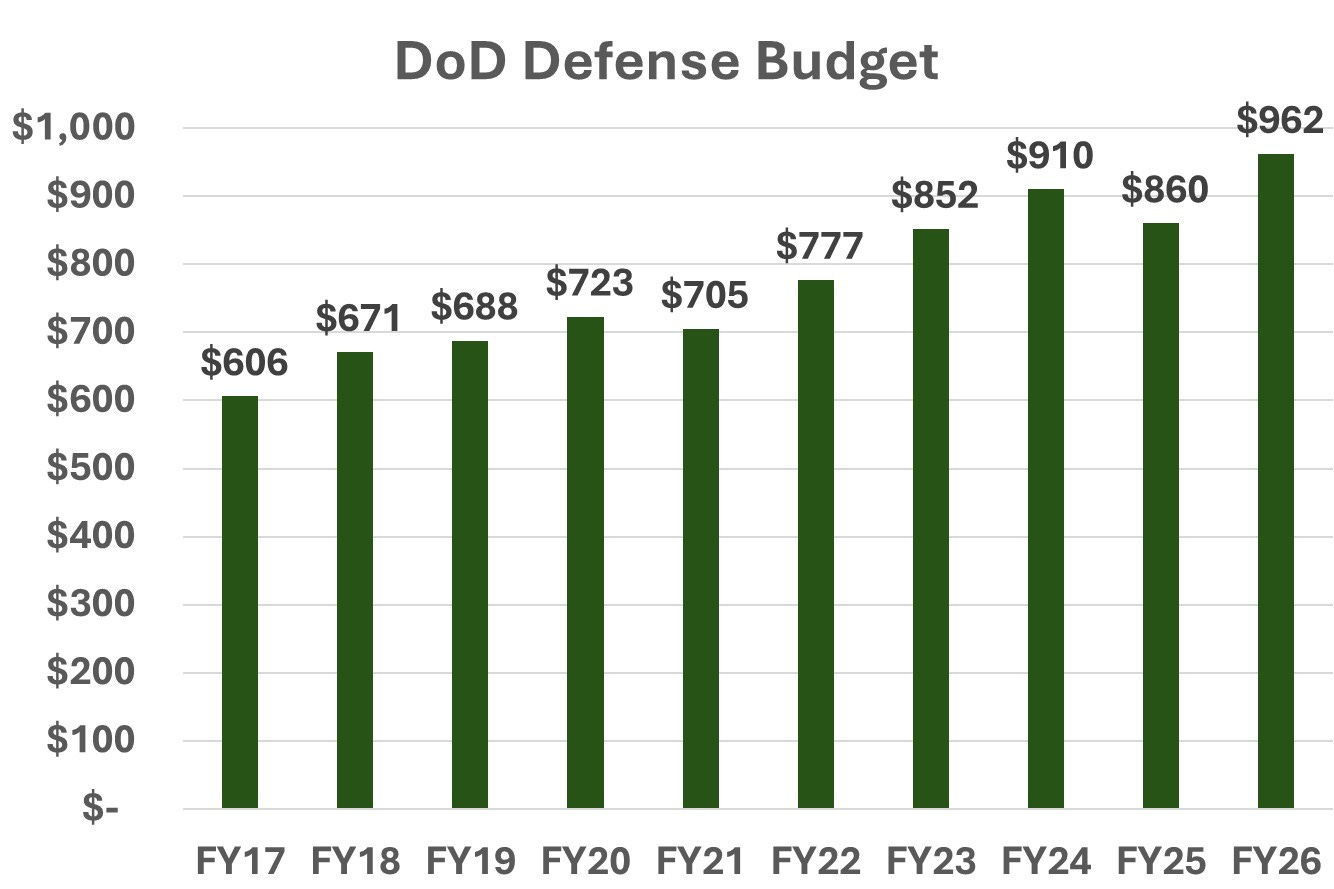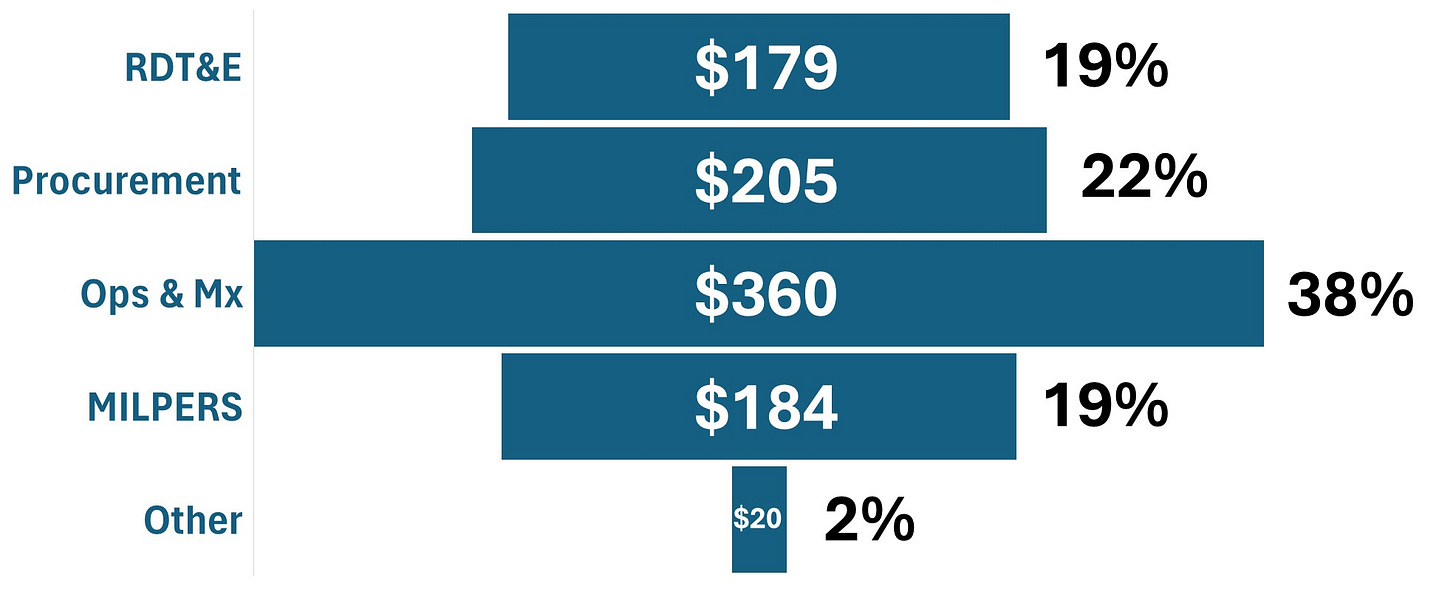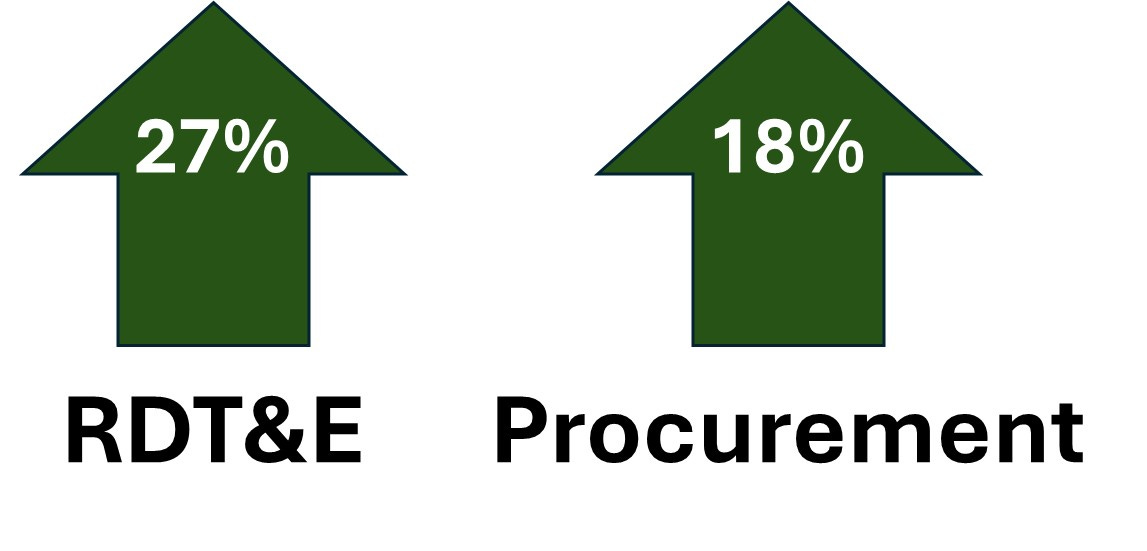Welcome to the next iteration of the defense budget deep dive. With the department publishing the detailed budget request documents, we’re diving into these to provide you a comprehensive analysis of where the DoD is investing, the winners and losers, the key programs and initiatives, and reading between the lines on what’s in/out of the budget. We pieced together the puzzle to tell the story and provide you links to all the authoritative budget documents.
Strategic Perspective
2025 Interim National Defense Strategic Guidance
Defend the Homeland
Deter China in the Indo-Pacific
Empower Allies and Partners
SECDEF’s Priorities
Reestablishing Deterrence by defending our homeland
Rebuilding Our Military by matching capabilities to threats
Reviving the Warrior Ethos and restoring trust in our military
FY26 Budget Trends
After the year long CR in FY25, this is a sizable increase in defense spending for FY26.
Defense Overview Budget Document (DoD says Coming Soon)
Program Acquisition Cost by Weapons System (DoD says Coming Soon)
DOD RDT&E Programs (and Excel)
DoD Procurement (and Excel)
Budget Allocation is Consistent With Previous Years
Consistent with past years, Operating and Maintaining the force costs roughly as much as researching, developing, and procuring modern capabilities. Another lens is the DoD spends twice as much on O&M than Military Personnel.
Here’s a more detailed overview, consistent with our past budget assessments. This includes the discretionary and the reconciliation requests. RDT&E gets a huge 27% increase, while Procurement 18%. O&M only 5%. The Department of the Air Force (USAF + USSF) receives 31%, the Navy (with USMC) 30%, and the Army at 20%.
Reconciliation - aka One Big Beautiful Bill (OBBB) Act
In DoD’s FY26 defense budget request, there is a proposed breakdown between base budget (discretionary) and expected funds from reconciliation. The OBBB Act, which extends beyond defense was signed into law on July 4. It provides substantial funding for many White House and Defense priorities.
Specifically, OBBB allocates $150B for defense, $113.0B of which is expected to be leveraged in FY26. With a base budget of $848.3B and $113.0B of reconciliation funding, DoD has a total FY26 budget request of $961.6B. Add in funding external to DoD for NNSA and other national security agencies for a $1T national defense topline (which is what we recommended for FY25).
With the $113.0B enacted as mandatory spending, Congress will spend the ensuing months reviewing, debating, and finalizing the discretionary budget through the defense appropriations act process.
With this year’s delayed budget release and the intricate twists of Reconciliation, our analysis is a game-changer. Unlock this comprehensive, expert analysis for a fraction of the cost of what other firms charge (or your staff’s valuable time) with our affordable subscription—
your ultimate edge in mastering the defense budget landscape!









